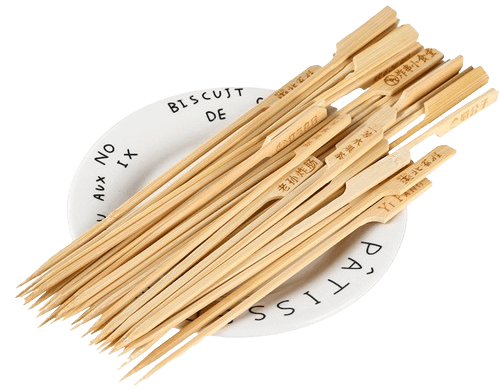Key Takeaways
| Question | Answer |
|---|---|
| Should chopsticks touch your mouth? | No, it is considered unhygienic and rude for chopsticks to touch your mouth. |
| What are some basic rules for using chopsticks? | Do not stick chopsticks vertically in food, do not eat directly from serving dishes, do not use chopsticks to point or play. |
| Are there cultural differences in chopstick etiquette? | Yes, each culture has specific rules, such as lifting bowls close to the mouth in Japan and China using chopsticks to cut food in Taiwan. |
| How can I properly hold and use chopsticks? | Hold the upper chopstick like a pencil, and stabilize the lower one against your ring finger. Practice picking up small items to improve your technique. |
| What should I avoid when using chopsticks? | Avoid stabbing food, passing food between chopsticks, and leaving chopsticks crossed on your bowl or table. |
| Can chopsticks be reused? | Yes, with proper care and cleaning, bamboo chopsticks can be reused multiple times. |
| What is the proper etiquette for communal dining? | Use serving chopsticks for communal dishes, or if not available, use the thick end of your chopsticks to transfer food to your plate. |
| Are there practical tips for beginners? | Start with easy-to-grip food, avoid slippery or very small items initially, and practice regularly to improve your skills. |
Introduction
At Ecostix Global, our mission is to revolutionize the way the world sees bamboo products. We strive to create high-quality, sustainable bamboo chopsticks and sticks that are not just utensils but symbols of a more eco-conscious lifestyle. Our focus is on blending traditional craftsmanship with modern innovation to produce items that are both environmentally friendly and aesthetically pleasing. We aim to inspire a shift towards sustainable practices in everyday life, making a positive impact on the environment while serving the practical needs of our customers.
Basic Chopstick Etiquette
Do Not Leave Chopsticks Vertically in Food
One of the most important rules is to never leave your chopsticks stuck vertically in your food. This action is associated with funeral rituals in many Asian cultures and symbolizes death. To avoid this, always place your chopsticks on a chopstick rest or across your dish when not in use.
Do Not Eat Directly from Serving Dishes
When dining with others, it is considered polite to place food on your plate first before eating. Using chopsticks to eat directly from communal dishes is seen as impolite and unhygienic. Always use serving chopsticks if provided, or transfer food to your own plate before eating.
Do Not Stick Food with Your Chopsticks
Using chopsticks to spear food is frowned upon. Instead, practice picking up food properly with your chopsticks. This not only shows respect for the culture but also improves your chopstick skills over time.
Avoid Playing with Chopsticks
Chopsticks are not toys. Avoid drumming, waving them in the air, or using them to point at people. Such behaviors are considered disrespectful and childish. Keep your chopsticks still when you are not using them to eat.
Use Serving Chopsticks for Communal Dishes
In communal dining situations, it is important to use serving chopsticks to transfer food to your plate. If serving chopsticks are not available, use the thick end of your own chopsticks to pick up food from the shared dish. This practice maintains hygiene and shows consideration for others.
Cultural Nuances and Specific Rules
Japan
- Lifting the Bowl: In Japan, it is acceptable to lift a bowl close to your mouth and use chopsticks to push food into your mouth.
- Proper Placement: At the table, chopsticks should be placed above the plate, parallel to the table, with tips pointing to the left.
- Disposable Chopsticks: Avoid rubbing disposable chopsticks together as it implies they are of poor quality.
China
- Respect for Elders: Always allow elders to be served and begin eating first.
- Chopstick Placement: Do not point your chopsticks at others when placing them down. It is best to rest them on a chopstick rest or across your plate.
Taiwan
- Cutting Food: It is acceptable to use chopsticks to cut soft food into smaller portions, especially for children.
Korea
- Table Setting: In Korea, chopsticks are typically placed to the right of the spoon. Using both chopsticks and a spoon for different types of food is common.
Vietnam
- Bowl Handling: Similar to Japan and China, it is common to lift a bowl close to the mouth and push food with chop
Thailand
- Usage Decline: In Thailand, the use of chopsticks has declined over the past century, with forks and spoons being more common. However, chopsticks are still used for specific dishes, such as noodles.
Practical Tips and Techniques
Proper Grip and Handling
To master chopstick use, start with the proper grip. Hold the upper chopstick like a pencil, between your thumb, index, and middle fingers. The lower chopstick should rest against your ring finger and the base of your thumb. This method allows you to move the upper chopstick while keeping the lower one stationary, giving you better control.
Step-by-Step Guide:
- Hold one chopstick in your dominant hand, placing it between your thumb and index finger, and resting it against your ring finger.
- Place the second chopstick between your thumb and index finger, using your middle finger to stabilize it.
- Practice moving the upper chopstick to pinch small objects, such as grains of rice or pieces of paper.
Cutting Food with Chopsticks
Cutting food with chopsticks can be challenging, but with practice, it becomes easier. Use the following techniques for soft or tender foods:
- Press Down: Press down on the food with both chopsticks, widening the tips slightly to cut through.
- Pinch and Twist: Pinch the food and gently twist the chopsticks in opposite directions to tear it apart.
Hygiene and Safety
Maintaining hygiene while using chopsticks is crucial, especially in communal dining settings. Follow these tips to ensure cleanliness:
- Use Serving Chopsticks: Always use serving chopsticks to take food from communal dishes.
- Avoid Chewing: Do not chew or suck on your chopsticks, as this is considered unhygienic and rude.
- Rest Properly: When not using your chopsticks, rest them on a chopstick holder or across your plate to keep them clean.
Common Mistakes and How to Avoid Them
Stabbing Food
Stabbing food with chopsticks is considered impolite in many cultures. Instead, practice picking up food using the proper grip and handling techniques. If the food is slippery, use a slight pinching motion to secure it.
Passing Food Between Chopsticks
Passing food directly from one pair of chopsticks to another is a significant faux pas, especially in Japan, where it resembles a funeral ritual. To share food, transfer it to a plate for the other person to pick up.
Leaving Chopsticks Crossed
Leaving chopsticks crossed on your bowl or table signifies that you are done eating and can be interpreted as rude. Instead, place them parallel on a chopstick rest or across your plate when taking a break.
Waving Chopsticks Indecisively
The indecisive waving of chopsticks over dishes is seen as greedy and impolite. Make a decision in your mind before reaching for food, and try to take a little from each dish rather than favoring one.
Visual and Practical Guides
Step-by-Step Visuals
Incorporate illustrations or photos to demonstrate the correct way to hold and use chopsticks. Visual aids can make learning easier and more engaging.
Video Demonstrations
Links to video tutorials can provide additional support for beginners. Watching experts use chopsticks can help you understand the nuances of proper technique and etiquette.
Conclusion
Mastering chopstick etiquette is not only about respecting cultural traditions but also about enhancing your dining experience. By following these essential rules and tips, you can confidently use chopsticks in any setting, whether at home or in a formal restaurant. At Ecostix Global, we believe that sustainable bamboo chopsticks are not just tools for eating but symbols of a more eco-conscious lifestyle. Embrace the art of chopstick use and join us in promoting sustainable practices in everyday life.
For more information on our high-quality bamboo products and tips on maximizing their lifespan, visit our About Us and Product pages.
Explore more about chopsticks and sustainable practices:
- Maximizing Lifespan of Bamboo Chopsticks
- Bamboo Chopsticks Reusability and Care
- Maintaining Bamboo Chopsticks: Durability and Sustainability
- Bamboo Chopsticks: Durability and Safety
- How to Clean Bamboo Chopsticks
- Bamboo Chopsticks: Sustainable Practices
- How to Choose Bamboo Chopsticks
- Reusable Bamboo Chopsticks
Join us on a journey towards a more sustainable future with Ecostix Global.




One Response
Hеllo there! I could have sworn I’ve been to this blog bеfore but after bгowsing through
ѕome of the post I realized it’s new to me. Anyhⲟw, I’m
definitely happy I found it and I’lⅼ be book-marking and сhеcking back often!